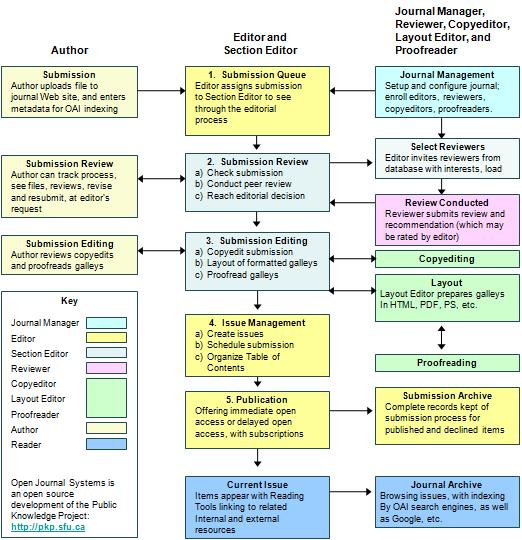- Focus and Scope
- Section Policies
- Peer Review Process
- Publication Frequency
- Open Access Policy
- Archiving
- Publication Ethics and Malpractice Statement
- Licensing (Creative Commons) and Archiving
- Policy of Screening for Plagiarism
Focus and Scope
Ceria: Jurnal Program Studi Pendidikan Anak Usia Dini memiliki fokus dalam penelitian dalam bidang pendidikan dan anak usia dini. Artikel ilmiah yang termasuk dalam jurnal ini adalah metode pengajaran, media pembelajaran, permasalahan anak usia dini dalam pendidikan, kurikulum anak usia dini, teknologi pendidikan dan pembelajaran dalam pendidikan anak usia dini, pengembangan media dan metode dalam pembelajaran anak usia dini, pengembangan profesi pendidik dan tenaga kependidikan anak usia dini, dan hal lain yang terkait pada anak usia dini.
Section Policies
Articles
Peer Review Process
Ceria: Jurnal Program Studi Pendidikan Anak Usia Dini menggunakan sistem double event blind review untuk seluruh artikel ilmiah dalam jurnal ini.

Publication Frequency
Ceria: Jurnal Program Studi Pendidikan Anak Usia Dini (p-ISSN: 2301-9905 and e-ISSN: 2775-409X).
Short journal title: Ceria
Ceria: Jurnal Program Studi Pendidikan Anak Usia Dini are scheduled for publication (January, July & October).
Ceria: Jurnal Program Studi Pendidikan Anak Usia Dini is electronically published via journal website (http://jurnal.umt.ac.id/index.php/ceria/index).
Ceria: Jurnal Program Studi Pendidikan Anak Usia Dini is published by Program Studi Pendidikan Guru Pendidikan Anak Usia Dini, Universitas Muhammadiyah Tangerang.
Open Access Policy
This journal provides immediate open access to its content on the principle that making research freely available to the public supports a greater global exchange of knowledge.
Archiving
This journal utilizes the LOCKSS system to create a distributed archiving system among participating libraries and permits those libraries to create permanent archives of the journal for purposes of preservation and restoration. More...
Publication Ethics and Malpractice Statement
Licensing (Creative Commons) and Archiving
Policy of Screening for Plagiarism
Papers submitted to Ceria: Jurnal Program Studi Pendidikan Anak Usia Dini will be screened for plagiarism using Plagiarism Checker X plagiarism detection tools. Ceria: Jurnal Program Studi Pendidikan Anak Usia Dini will immediately reject papers leading to plagiarism or self-plagiarism.
Before submitting articles to reviewers, those are first checked for similarity/plagiarism tool, by a member of the editorial team. The papers submitted to Ceria: Jurnal Program Studi Pendidikan Anak Usia Dini must have similarity level less than 20%.
Plagiarism is the exposing of another person’s thoughts or words as though they were your own, without without permission, credit, or acknowledgment, or because of failing to cite the sources properly. Plagiarism can take diverse forms, from literal copying to paraphrasing the work of another. In order to properly judge whether an author has plagiarized, we emphasize the following possible situations:
- An author can literally copy another author’s work- by copying word by word, in whole or in part, without permission, acknowledge or citing the original source. This practice can be identified through comparing the original source and the manuscript/work who is suspected of plagiarism.
- Substantial copying implies for an author to reproduce a substantial part of another author, without permission, acknowledge or citation. The substantial term can be understood both in terms of quality as quantity, being often used in the context of Intellectual property. Quality refers to the relative value of the copied text in proportion to the work as a whole.
- Paraphrasing involves taking ideas, words or phrases from a source and crafting them into new sentences within the writing. This practice becomes unethical when the author does not properly cite or does not acknowledge the original work/author. This form of plagiarism is the more difficult form to be identified.
